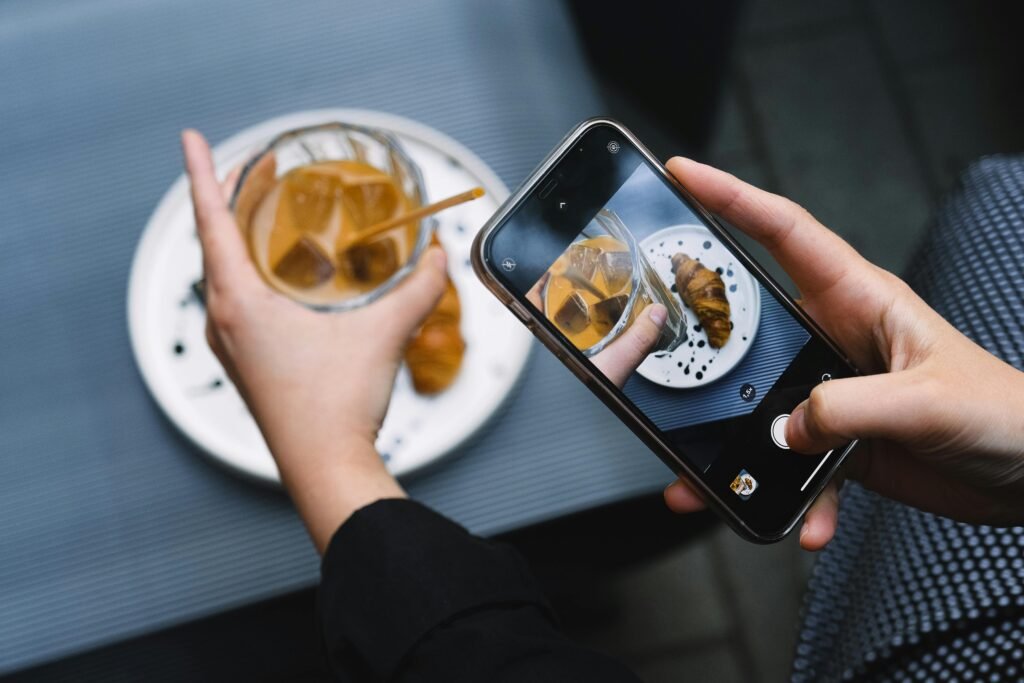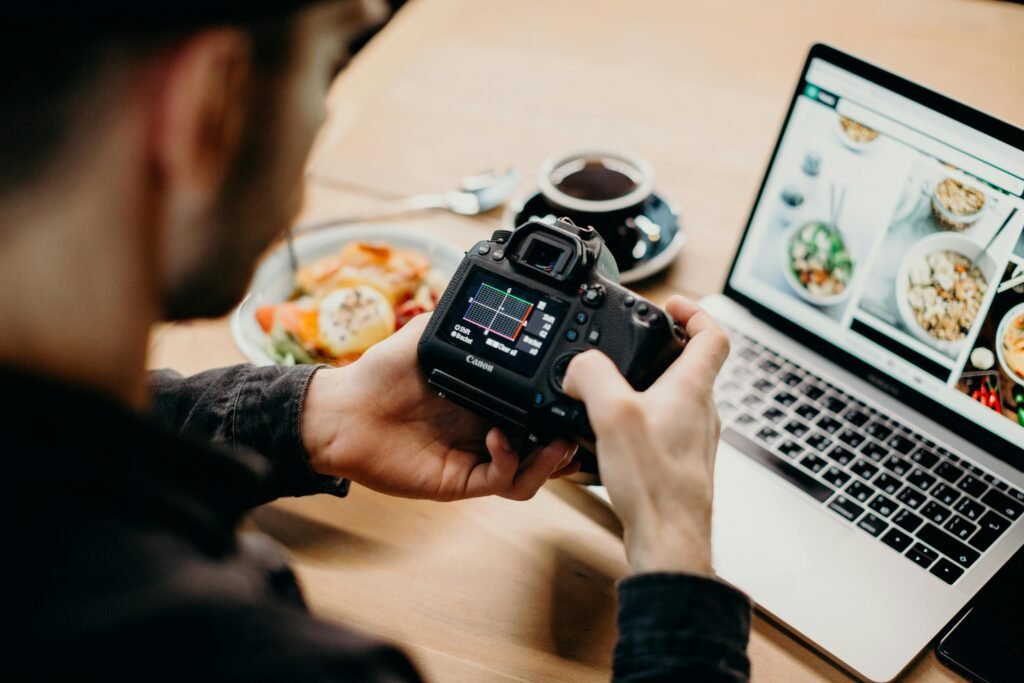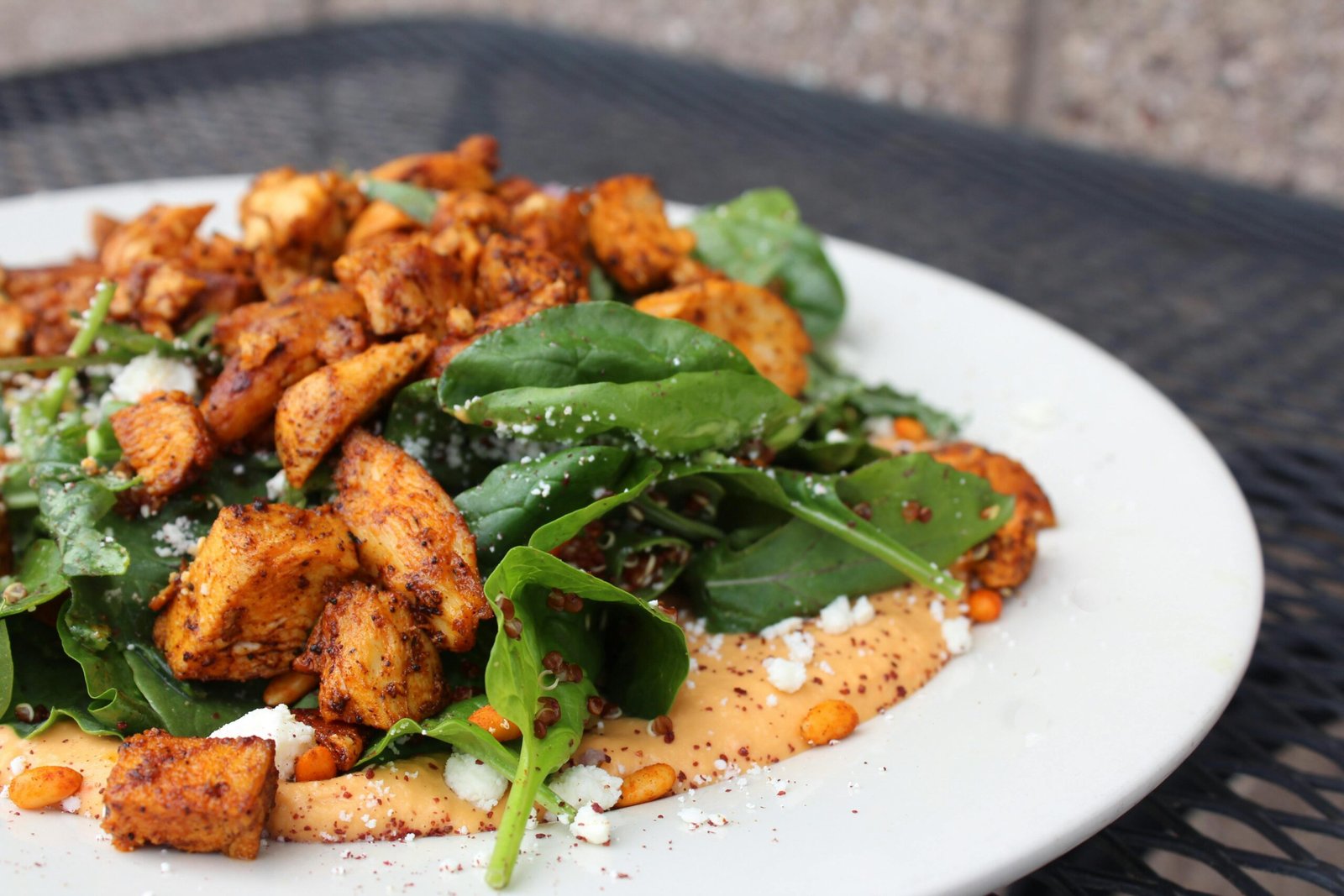Food blogging has evolved into a full-time career for thousands of passionate creators in 2025. What began as a simple way to share favorite recipes and kitchen stories has turned into a powerful online business—one that offers multiple income streams and the freedom to work from anywhere. With the explosion of social media, video content, and digital tools, food bloggers today aren’t just writing blog posts—they’re building brands.
Whether you run a niche blog on gluten-free baking or share traditional family recipes from your culture, there are now more ways than ever to monetize your content. From affiliate links and sponsored posts to selling your cookbooks or hosting virtual cooking classes, the opportunities are endless if you know where to look.
In this article, I’ll walk you through 21 real and effective ways that how do food Bloggers Make Money in 2025. Whether you’re a beginner starting from scratch or a seasoned blogger looking to grow, these strategies are proven, scalable, and tailored for the current digital landscape. Let’s dive in!
What Is Food Blogging?
Food blogging is the practice of sharing food-related content, such as recipes, cooking tips, restaurant reviews, or culinary experiences, through a blog or social media platform. A food blogger typically combines personal storytelling with photography and written content to engage their audience around their passion for food.
In 2025, food blogging goes beyond just writing recipes. Many food bloggers create videos, run newsletters, manage online communities, and even sell products or services. Some focus on specific niches like vegan cooking, gluten-free baking, cultural cuisines, or budget meals. Others offer behind-the-scenes looks into their kitchens, cooking challenges, or reviews of the latest food trends.
At its core, food blogging is about inspiring and educating others through food. It’s a powerful platform to build a personal brand, connect with like-minded food lovers, and even grow a sustainable business by monetizing content through ads, affiliate links, digital products, and more.
How Do Food Bloggers Make Money

1. Display Ads (With Networks Like Mediavine or Raptive)
One of the most common ways food bloggers make money is by placing display ads on their websites. Ad networks like Mediavine and Raptive (formerly AdThrive) pay bloggers based on impressions and traffic. The more visitors you have, the more income you can generate passively. In 2025, ad tech has improved with faster loading times and better targeting, making this revenue stream even more attractive.
2. Affiliate Marketing (Amazon, Thrive Market, etc.)
Affiliate marketing allows food bloggers to earn commissions by recommending products they already use—like air fryers, kitchen scales, or organic ingredients. You simply include special links in your blog posts, and when someone buys through your link, you earn a percentage. Platforms like Amazon Associates and niche food companies like Thrive Market are popular among food bloggers in 2025.
3. Sponsored Posts & Brand Collaborations
Brands pay food bloggers to create content that features their product. These can be in the form of recipes, reviews, or Instagram posts. Rates vary depending on traffic and social media reach. In 2025, companies increasingly look for micro-influencers with highly engaged audiences over huge followings, which makes it easier for newer bloggers to land paid opportunities.
4. Selling eCookbooks and Meal Plans
Food bloggers are now creating digital cookbooks and weekly meal plans to sell directly to their audience. These products are easy to produce and require no shipping, making them highly profitable. You can create these using Canva or Adobe InDesign and sell them through Gumroad, Etsy, or directly on your blog.
5. Offering Paid Cooking Classes or Webinars
Virtual cooking classes have exploded in popularity since 2020, and in 2025, they’re a staple for many food bloggers. Whether it’s teaching sourdough baking or vegan meal prep, you can host live or recorded sessions and charge attendees. Platforms like Zoom or Teachable make it easy to set up.
6. Launching a YouTube Channel with Monetization
YouTube remains a powerful platform for food bloggers to showcase their recipes through video. Once you hit 1,000 subscribers and 4,000 watch hours, you can apply for monetization through ads. But that’s just the beginning—you can also earn through memberships, Super Chats, and affiliate links in the video descriptions.
7. Creating a Membership Community (Patreon, Ko-fi)
Many food bloggers offer exclusive content to their most loyal fans via paid memberships. Patreon and Ko-fi allow creators to build tiers with rewards like members-only recipes, Q&A sessions, behind-the-scenes content, and more. It’s a great way to build recurring income while deepening your connection with your audience.
8. Promoting Kitchen Tools as an Affiliate or Ambassador
Companies often look for bloggers to become brand ambassadors. You can promote products you love—like blenders, knives, or baking pans—and receive commissions or flat payments. In 2025, affiliate tools like LTK (LikeToKnow.It) or Impact streamline this process, making it easier to track performance and payouts.
9. Developing and Selling Your Own Physical Products (Spices, Cookware)
Some food bloggers have taken their brand to the next level by launching physical product lines. Think custom spice blends, signature sauces, or branded cookware. Platforms like Shopify or Etsy make it easy to handle sales and logistics, especially with print-on-demand and dropshipping options.
10. Creating and Selling Digital Products (Templates, Planners, Printables)
Besides recipe content, you can also sell related digital products like meal planning templates, grocery shopping checklists, or content calendars for other bloggers. These can be created once and sold repeatedly, adding another passive income stream to your business.
11. Running a Paid Substack or Email Newsletter
Substack has become popular for bloggers to send out premium email newsletters. You can offer a free version and a paid tier where subscribers get exclusive recipes, tips, or early access to new content. This approach works especially well if your blog has a strong storytelling or niche focus.
12. Freelance Food Photography and Styling
Many brands and websites are constantly on the hunt for high-quality food images. If you’ve mastered the art of food photography, you can offer your services on a freelance basis. Bloggers in 2025 use Instagram and portfolio sites like Behance or Pixieset to attract clients and showcase their work.
13. Offering 1:1 Food Blogging Coaching or Consulting
Experienced food bloggers can monetize their knowledge by coaching others. You might help clients improve their SEO, food photography, content strategy, or monetization techniques. This personalized service allows you to charge premium rates while making a difference in someone’s blogging journey.
14. Selling Stock Food Photos
In addition to freelance work, you can sell your food photos as stock images. Platforms like Shutterstock, Adobe Stock, and even niche sites like Stocksy allow you to earn passive income every time your image is downloaded. High-quality, well-lit food images are in constant demand in 2025.
15. Recipe Development for Brands or Media Outlets
Many food bloggers are hired by brands or publishers to create original recipes featuring specific ingredients. These gigs typically pay well and offer great exposure. It helps to have a polished media kit and portfolio that showcases your creativity and recipe development skills.
16. Publishing a Cookbook (Self-Published or With a Publisher)
Publishing a cookbook—whether traditionally or independently—is a major milestone for many food bloggers. Self-publishing platforms like Amazon KDP or Blurb make it easier than ever to get started. With the right promotion, a cookbook can serve as both a source of income and a credibility booster.
17. Hosting Food Tours or Culinary Retreats
If you love travel, consider organizing food tours or retreats for your audience. These could include cooking workshops, farm visits, or street food tours in exciting destinations. Bloggers charge a premium for these hands-on experiences and often partner with travel companies to handle logistics.
18. Getting Tipped for Exclusive Recipes (via Buy Me a Coffee, etc.)
Platforms like “Buy Me a Coffee” and “Tip Jar” allow fans to support their favorite bloggers with small donations. In exchange, you can offer behind-the-scenes content or exclusive recipes. It’s a low-pressure way to earn from your audience without a full-blown membership program.
19. Selling Merchandise (T-Shirts, Aprons, Mugs)
Custom merch—like branded aprons, mugs with foodie quotes, or t-shirts featuring your logo—can generate extra revenue while building your brand. You can use print-on-demand services like Printful or Teespring to create and sell products without managing inventory.
20. Partnering with Food Subscription Boxes or Meal Kits
Subscription services like HelloFresh or Blue Apron often work with food bloggers for affiliate deals or sponsored content. You can promote these boxes in your posts or offer discount codes to your audience while earning a cut from every new sign-up.
21. Using TikTok/Instagram Reels to Drive Income via Creator Funds or Ads
Short-form videos remain huge in 2025. By consistently posting high-quality Reels or TikToks, food bloggers can tap into Creator Funds or partner with brands for paid promotions. The key is to hook viewers within the first few seconds and offer value in bite-sized content.
What Do You Need To Start A Food Blog?

Starting a food blog in 2025 is easier than ever, but having the right tools and mindset is key to success. Here’s what you’ll need:
- A Niche or Focus
Decide what kind of food content you want to share: healthy meals, desserts, vegan cooking, cultural cuisine, or quick weeknight dinners. A clear niche helps you attract the right audience. - A Blog Name & Domain
Choose a memorable blog name and buy a matching domain (e.g., www.yourblogname.com). Sites like Namecheap or GoDaddy can help you secure your domain. - Web Hosting & Blogging Platform
To build your blog, use a reliable hosting provider like Bluehost, SiteGround, or Hostinger, and install WordPress (most popular for blogging). WordPress gives you full control over your design and monetization. - A Clean, Responsive Theme
Pick a mobile-friendly and easy-to-navigate theme. Platforms like Kadence, Astra, or Foodie Pro (on Genesis) are great for food bloggers. - Basic Photography Gear
You don’t need a DSLR to start Many bloggers use smartphones with good lighting and styling. Eventually, you can upgrade to a camera, tripod, and lighting setup. - Recipe Plugin
Use a WordPress recipe plugin (like WP Recipe Maker) to format and display recipes in a user-friendly and SEO-friendly way. - Social Media Accounts
Set up Instagram, Pinterest, TikTok, and Facebook pages to share your content, build your audience, and drive traffic to your blog. - Email Marketing Tool
Start collecting emails early using tools like MailerLite or ConvertKit. Email subscribers are key to long-term blog growth and income. - SEO & Analytics Tools
Install plugins like Rank Math or Yoast for on-page SEO and connect Google Analytics and Google Search Console to track performance. - Consistency & Patience
Most importantly, stay consistent with posting and engaging with your readers. Food blogging is a long-term game, and success comes with time and effort.
How Often Do You Need To Post?
There’s no one-size-fits-all answer, but consistency is more important than frequency. As a general guideline:
- Beginners: Aim for 1–2 posts per week. This helps build your content library and signals to Google that your site is active.
- Established Bloggers: Many post 1–4 times per month, focusing more on high-quality, SEO-optimized content that drives long-term traffic.
- Seasonal or Batch Creators: Some bloggers create several posts in advance and schedule them around holidays, food trends, or peak seasons (e.g., Thanksgiving recipes in October).
Quality always beats quantity. A well-written, well-photographed recipe with good SEO can outperform 5 rushed posts. Focus on creating valuable content that solves a problem (like “easy gluten-free dinners” or “one-pot family meals”) and keep a schedule you can realistically stick to.
Also, don’t forget to update old posts; refreshing and optimizing existing content can be just as effective as publishing something new.
FAQs About How Do Food Bloggers Make Money
How Food Bloggers Make Money On Instagram?
Food bloggers make money on Instagram through sponsored posts, affiliate links, and brand collaborations. They also earn via Reels bonuses, product sales, and digital content promotion.
How Do Bloggers Come Up With Recipes?
Bloggers come up with recipes by experimenting in the kitchen, adapting family favorites, or putting creative twists on trending dishes. They also research seasonal ingredients, cultural cuisines, and audience preferences to inspire new ideas.
Can You Use Other People’s Recipes On Your Blog?
You can use other people’s recipes for inspiration, but you should not copy them word-for-word. To stay legal and ethical, rewrite the instructions in your own words, make your own tweaks, and always give proper credit if inspired by another recipe.
Do Food Bloggers Get Free Food?
Yes, food bloggers often get free food from brands, restaurants, or PR companies in exchange for honest reviews or promotional content. However, most successful bloggers still create original recipes and buy ingredients themselves to maintain authenticity and trust.
How To Become A Good Blogger?
To become a good blogger, focus on creating valuable, original content consistently while improving your writing, SEO, and photography skills. Engage with your audience, stay authentic, and continuously learn from feedback and analytics to grow over time.
Conclusion
Food blogging in 2025 is more than just sharing recipes; it’s a dynamic way to build a personal brand and earn real income. With 21 diverse and profitable monetization methods available, from affiliate marketing to virtual cooking classes, there’s no limit to what a passionate food blogger can achieve. The key is to stay consistent, focus on quality content, and diversify your income streams. Whether you’re just starting or looking to grow, there’s never been a better time to turn your love for food into a thriving online business.
Hi there. My name is Abbas Khan. I’m passionate about finding smart ways to save and make money from anywhere in the world.
Learning how to earn remotely and manage my finances gave me true freedom, and now I want to help you do the same.
Join me as I explore money-saving hacks, income ideas, and tips to build a flexible, location-independent lifestyle you’ll love.

